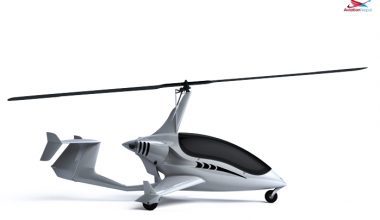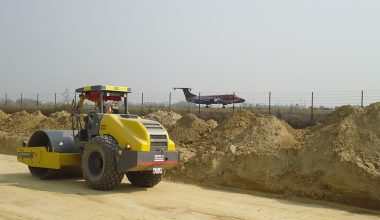
How are paper planes stable?
Who has remembered the childhood memories of paper planes? From the classroom tales to the battle of dignity among friends, an archaic way of poking your crush or the inspiration for someone to become a pilot or an engineer, the paper glider has always carried many evocative reminiscences. After so much of years, it’s my fortune I got a chance to know one of my best childhood friend. It’s really great to know about its features and its aerodynamics. It is really interesting to know that despite having such a weird look and being very dissimilar to its cousin airplanes, how do they maintain stability and how do they fly with such a great endurance? Well it could be more helpful if you are willing to make it once again and improve your childhood record.
Introduction to the paper gliders:
Ironically paper gliders need no introduction. However, sometimes we forget to take care of our close ones. One simple check. Do you know how much is the longest flight of paper glider as recorded in Guinness World Records? Well if you have guessed it 226 feet and 10 inches then you are right. If you are thinking it is not that astonishing then for your reminder, the flyer by Wright brothers only flew 120 feet on testing day followed by 150 feet, 200 feet and finally 800 feet. So, that was the invention of the carrier plane then obviously this paper plane ranging this feat is amazing. We have been familiar with a simple paper folded gliders but there are gliders which are more alike to delta winged fighter aircraft also. Some paper gliders are so modified on their wings that their stability and gliding ratio is extremely improved. Despite having no empennage, how do they balance? If tails are not so necessary factors then are there tailless aircraft too?
Yes, there are. The Northrop XB-35, B-2, Convair F-102 Delta Dragger, X-36 which is under test are some tailless aircraft.
Stability of Paper gliders:
We want to make a paper plane fast, so we miss a lot of things and finish it just with a delta wing. But we could have made it more stable by adding control surfaces like elevators. Theoretical advantage of tailless plane is it will experience less parasitic drag. We can fold the aft section of the wing to function it like elevators either up or down depending on whether fly slower or fly faster. But if the plane is too stable it flies faster and faster. So, to overcome this, the elevator must turn up to produce good trim airspeed.
For stability centre of gravity (CG) has a huge role. CG is the only point on which we can balance the whole object just relying on that one point. If the CG moves aft of a Neutral Point then the airplane is unstable and if CG moves forward of Neutral Point then the aircraft increases its stability. The basic function of elevators is to maintain greater CG range. Greater CG range means stability extends to greater range of mass distribution. Since CG of commercial planes depends on mass and location of cargo and passengers the need of elevator is more distinct. But in the case of paper planes its CG is fixed it requires no elevators to maintain its pitching stability.
In case of paper planes, the paper section used for holding the plane is fuselage of real plane. We can create small wingtip on both wings which works combined with fuselage to provide positive directional stability.
Talking about its wing shape, paper planes have low aspect ratio wings. The distance between wing tip to wing root is called wing span and distance from leading edge to trailing edge of a wing airfoil is called chord length. Aspect ratio is the ratio of wing span to average chord length. For the subsonic aircrafts high aspect ratio is preferable like in gliders i.e. having longer span and shorter chord length or both. But paper planes cannot make their wing long due to less strength of paper. The long it becomes the more moment it experiences and the wing sags. Not only this, the wing of paper planes is swept back which helps in reducing drag and increased speed as in fighter aircraft.
Another important wing adjustment parameter is making it dihedral. Dihedral means adjusting wing tips are at higher altitude than wing root. Dihedral increases lateral stability. It helps airplane to fly straight and also helps in turning. Dihedral provides a stabilizing rolling moment during a sideslip. When the plane yaws left, due to dihedral the right wing has larger angle of attack than the left one, resulting in rolling moment to left, which is stabilizing. Too much dihedral is not good for real aircrafts for some reasons but paper planes are advised to have a good dihedral.
Reynold’s number (Re) is the ratio of momentum force to viscous force in a fluid. So, the more Re means more momentum force and less viscous force. The effect of Re number is very significant. If a rough estimation is made about a paper plane of length 0.4 feet and flying at velocity around 10 mph then Re number is around 37,000. Some comparison to make: a four passenger plane’s wing has Re up to 6,000,000. So, we can see Re is very low which means paper planes are more affected by drag than it is benefitted with the lift. Then how do they manage the lift then? The answer is use of thin wing. If thicker wings are made the air takes longer time to make it around the airfoil and may have chance to get separated midway resulting huge drag and very less lift but if instead thin airfoil is made it doesn’t happen. It is amazing how nature knows all the aerodynamics. Remember dragonfly? Dragonflies fly at similar height and velocity as paper plane does. So, they experience same Re number. Hence, we can see their wings are very flat and thin. However, the fast flying birds like falcon has thick cambered wing. But we can’t use cambered airfoil here. It creates nose down pitching moments which is balanced by tails. But paper planes use no tails. So, for better paper plane make its wing nice and flat.
Artcile by; Bikram Koirala
Mechanical Engineering
Central Campus, Pulchowk.






